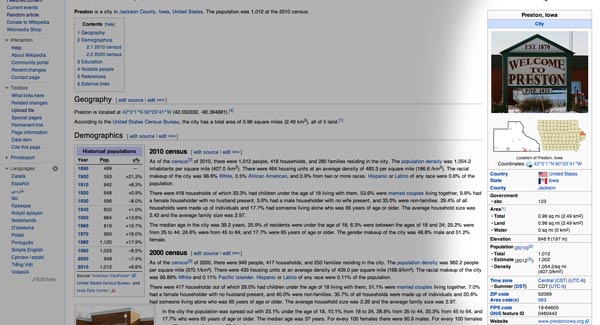
While working at CERN as a software engineer in 1989, Sir Tim Berners-Lee invented the World Wide Web. CERN is a large particle physics laboratory near Geneva, Switzerland where many scientists participate in experiments around the world. These scientists were eager to exchange data and results but were having difficulties doing so due to the distance. Berners-Lee describes the creation of the world wide web as an act of desperation. Most of the technology that is involved in the world wide web was already present, such as hypertext and the internet. Berners-Lee just linked them together into a lager imaginary documentation system-a web. He combined hypertext with the internet and connected that with the Transmission Control Protocol and domain name system; thus giving birth to to the Hypertext Transfer Protocol (HTTP).
The first ever website was about the WWW project itself. The 1993 copy of the original still exists at its original address. The site was set up so visitors could learn about the web and access details for creating their own web pages. Despite some small changes, the three fundamental technologies remain the foundation’s of today’s web: HTML, URI, and HTTP. These acronyms changed the way the entire world operates and communicates.
So, what’s the guy who changed the world (and was Knighted for it) doing these days? Besides talking a lot in front of eager nerds and running the World Wide Web Foundation, he’s working on some new developments to continue to revolutionize his already revolutionary idea.
Firstly let me say this: the things that happen with the web has far surpassed anyone’s expectations at its inception. The original website was built to exemplify a way to send information in document form. What we do here at Logic and what other web developers do (though let’s face it, not as well) is manipulate files in the web to look great and do cool stuff. What Berners-Lee is doing now is getting web designers and developers to not get lost in the design and forget about the importance of raw data. The term he is using as the future of the world wide web is “Linked Data.” The best and probably simplest example of this is Wikipedia. When you go to a Wiki page, there’s invariably boxes on the sides that has pulled data from the entry and will link to other descriptive information from the original data. The benefit of this is that a person can then explore other useful information and hopefully bring them to a better understanding of the original search.

The power of linked data goes way beyond the random “What the heck is that? Let’s Google it…” that we experience daily. In Berners-Lee’s TED Talk on Linked Data, he uses the example of government data being put on the web for everyone to view. Should these documents be linked, it enhances our relationship to it. We can then explore the information as it relates to our lives in business, school, etc. Programs such as “dbpedia” are being developed in order extract the arbitrary (linked) data and link it to other data and so on. Some questions that we may have for Google are far more complex. When utilizing linked data on our sites it creates a broader relationship than the typical hyperlink and makes the information extracted by Google (Bing, Yahoo, etc…) more relevant.
So…how do we do this? Berners-Lee in his article on linked data describes a 5-star system for developers:

Basically, the guy who invented the world wide web wants us to do our part to create an incredible resource of data. The framework exists in his development of the web but now we are challenged to take it a step further by creating a more personal relationship to the data. He’s the genius, I say we listen to him. Here’s his TED Talk: